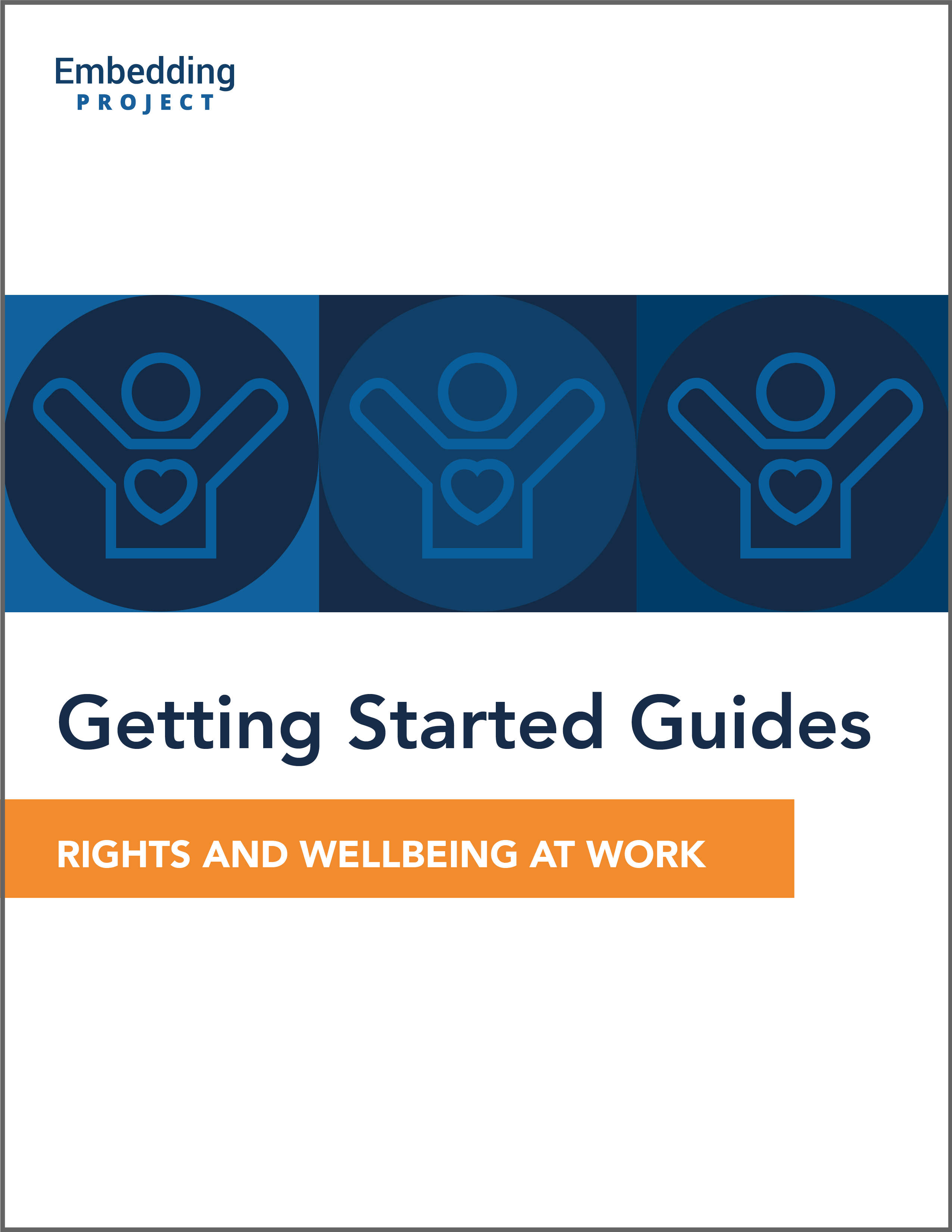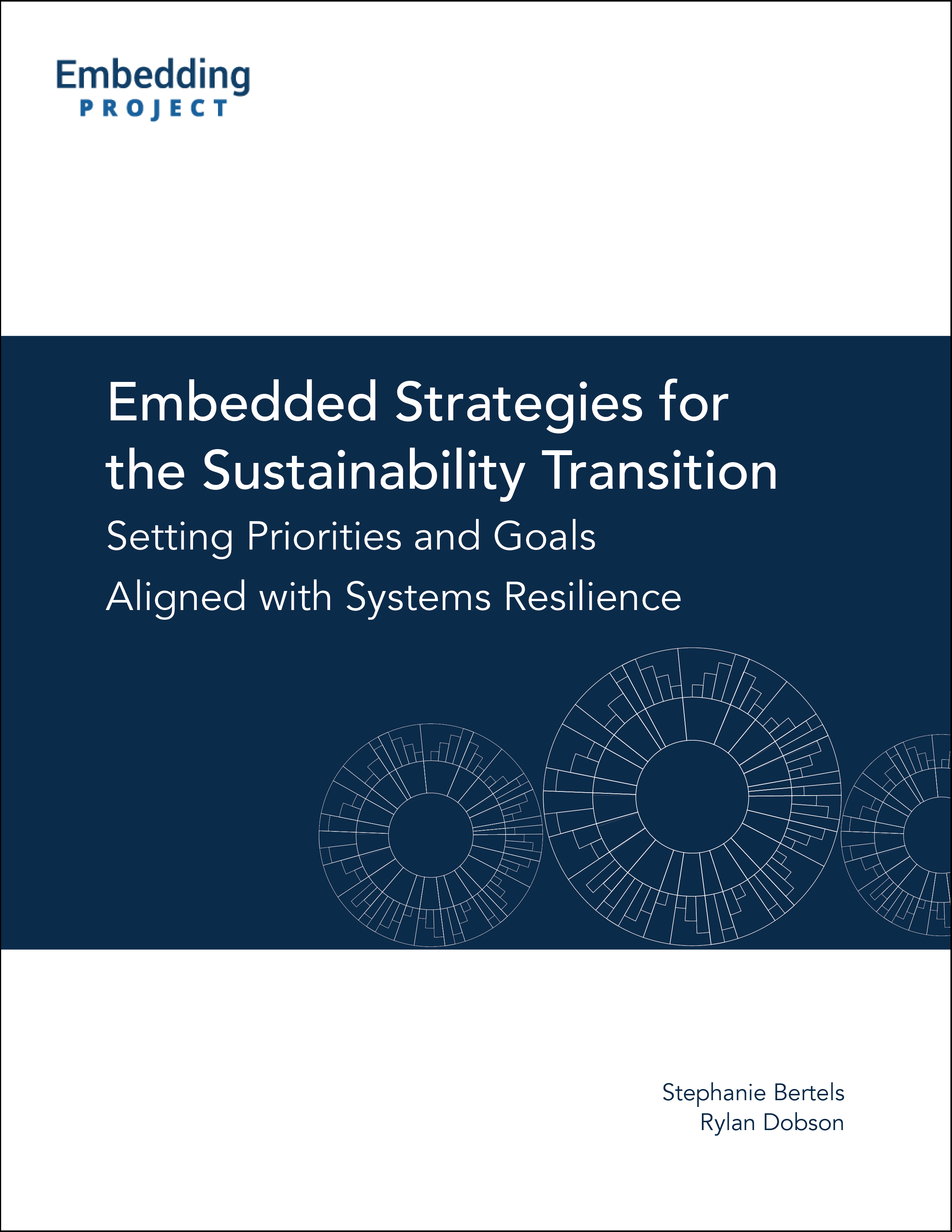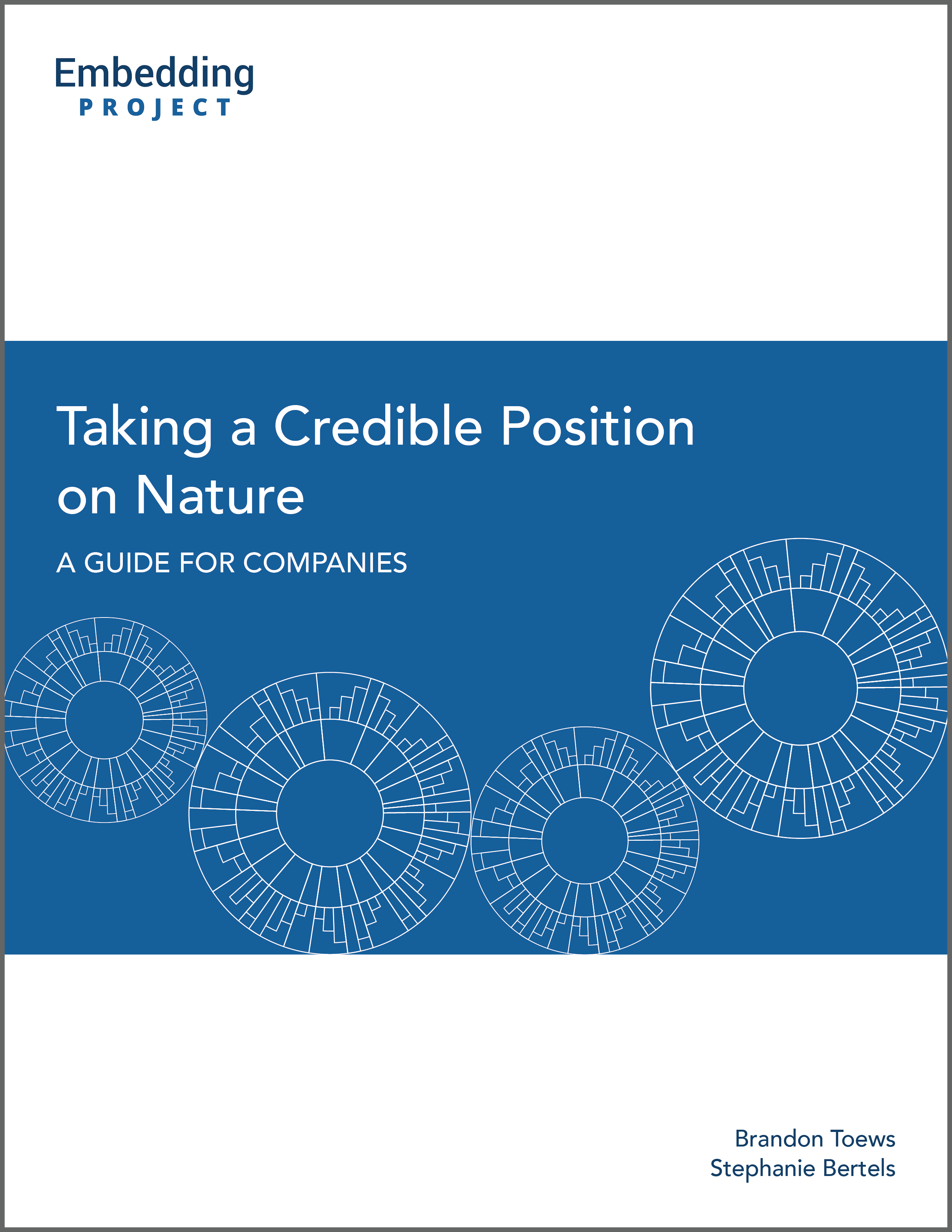Strategy
Share these Resources on:LinkedIn
Getting Started Guides: Pollutants
Companies should take a risk-based approach and work to eliminate processes and materials that result in pollutants and seek to understand the rates at which pollutants can be safely assimilated by the environment. Companies should control and limit resulting impacts on the environment and civil society.
Anchored in research, our series of Getting Started Guides on Pollutants will help your company understand how tackle the various sub-issues that relate to pollutants.
Pollutants in Air and Water: A Getting Started Guide
Metals: A Getting Started Guide (forthcoming)
Nitrogen and Phosphorus: A Getting Started Guide (forthcoming)
Noise, Light, and Radiation: A Getting Started Guide (forthcoming)
Pharmaceuticals, Endocrine-disrupting Chemicals, and Antimicrobials: A Getting Started Guide (forthcoming)
Human Rights: A Getting Started Guide
Human rights ensure that everyone can live a life of dignity and respect, without discrimination or deprivation. The full set of rights cover a broad range of topics relevant to business operations and relations. This Human Rights: A Getting Started Guide takes a holistic look at the topic of human rights and aims to support your company in building the foundation for managing human rights risks across your organisation and business relationships.
Getting Started Guides: Rights and Wellbeing at Work
Workers are entitled to numerous human and group rights while they are at work. Companies must ensure to respect these rights and not infringe upon them outside of work, and create a workplace culture and conditions that continuously enable workers’ enjoyment of their rights.
Anchored in research, our series of Getting Started Guides on Rights and Wellbeing at Work will help your company understand how tackle the various sub-issues that relate to workers' rights.
We recommend that you start with our broad guide providing an introduction to human rights:
Human Rights: A Getting Started Guide
And then proceed to the individual topics:
Human Dignity and Integrity (Tackling Modern Slavery): A Getting Started Guide
Safe and Healthy Working Conditions: A Getting Started Guide
Fair Compensation: A Getting Started Guide
Company-Worker Relations: A Getting Started Guide
Respectful, Equitable, and Inclusive Workplaces: A Getting Started Guide
Workforce Planning and Employee Development: A Getting Started Guide
Getting Started Guides: Climate and Energy
As the impacts of climate change worsen, the resilience of our environmental, social, and economic systems will be further threatened.
To help you understand how to get started on climate risk, adaptation, and climate mitigation, we have developed two guides that tackle sustainability sub-issues within climate and energy: Climate Risk Preparedness and Adaptation and Climate Mitigation (Decarbonisation and Carbon Removal).
Getting Started Guides: Water
Water resources, while renewable, are finite and increasingly under stress. While we’ve seen many companies realise that they need a strategy for water, they often lack clarity on the work needed to develop and achieve their goals.
To bridge this gap, we have developed a series of Getting Started Guides that tackle specific sustainability sub-issues within water: Water Stewardship, Water Quantity, and Water Quality.
Getting Started Guides: Nature
The wellbeing of society and business depends on nature. Our series of Getting Started on Nature Guides aim to support your company as it begins or revisits a strategy on specific sustainability sub-issues within nature. The guides help build a foundational understanding of the issues and provide clarity on the work ahead.
Getting Started Guides: Waste and Circularity
Our linear economy is not sustainable. While many companies realise that they need a strategy to handle waste, they often lack clarity on the work needed to develop and achieve their goals.
To bridge this gap, we have developed three separate guides that tackle specific sustainability sub-issues within waste and circularity and aim to support your company as it begins or revisits its strategy in this area. The guides help build a foundational understanding of the issues and provide clarity on the work ahead.
Getting Started Guides: An Introduction
Whether you are developing your first strategy for sustainability or refining an existing one, our Getting Started Guides can help provide clarity on the work ahead. Getting Started Guides: An Introduction shares our overall approach and clarifies the value of setting a clear strategy anchored in your company’s most material issues. It also explains key concepts that underpin the work outlined within each guide, including building an understanding of system thresholds and process-based interim targets.
You can also find each of our issue-specific Getting Started Guides below.
Sustainability Goals Database
Are you designing new goals or interested in benchmarking your goals against leading practice? To help advance progress in setting credible goals, we will maintain a public goals database containing leading sustainability goals and commitments set by large companies globally. Search by issue, company, industry, goal type, or SDG target.
If you are aware of goals that take a credible approach that should be featured in our database, please let us know.
Embedded Strategies for the Sustainability Transition
It is time for companies to take a very different approach to corporate strategy.
Our Embedded Strategies guide helps companies respond to the growing calls for businesses to articulate their purpose and their strategy in alignment with the need to shift the global economy towards the reduction of inequality, a rapid climate transition, the preservation of biodiversity, and the elimination of waste.
This guide will help you to develop a contextual strategy and goals that ensure your company is doing its part to maintain the resilience of key social and environmental systems.
Building on our Road to Context guide with insights from 300+ interviews with senior executives, CEOs, board chairs, and directors, as well as our experiences supporting companies around the world, it outlines resources and tactics that can help your company to scan for emerging issues and risks; understand their implications for your business; understand your impacts and your potential for positive influence; prioritise where it makes sense to direct your efforts; and set your strategy and goals in alignment with delivering systems value.
Embedded Strategies for the Sustainability Transition: Executive Summary
This primer provides a summary of concepts and tools outlined more fully in our Embedded Strategies for the Sustainability Transition guide. Building on our flagship Road to Context guide, our Embedded Strategies guide will help you to develop a credible strategy and goals that ensure your company is doing its part to maintain the resilience of key social and environmental systems.
Embedded strategies respond to the growing calls for businesses to articulate their purpose and their strategy in alignment with a rapid climate transition, reducing systemic inequality, preserving biodiversity, and the elimination of waste.
The Double Materiality Radar
Over the past five years, working with our partner companies, we have been developing, piloting, and refining a comprehensive, impact-oriented double materiality prioritisation process.
In this forthcoming guide, we will share this new approach to corporate sustainability materiality assessment, grounded in context and impacts, that brings more clarity to your disclosures, better insights to your corporate strategy process, and will help your company prioritise where to act to do its part to support sustainability.
To be notified when this guide is released, sign-up for our monthly newsletter or follow us on LinkedIn.
Scan: A Comprehensive List of Sustainability Issues for Companies
More companies are becoming interested in understanding how environmental and social factors may impact their business and what impacts their business may have on these issues. This guide provides a comprehensive list of emerging environmental, social, and governance issues, to help you reflect on your company’s impacts and identify where to prioritise action and allocate resources.
Developing Position Statements on Sustainability Issues
There is growing pressure among companies to link social and environmental limits to corporate strategy and goal-setting. However, the result is often a lengthy document that fails to make strategic connections between specific issues and their implications on business decision-making. We developed this guidebook to help you articulate a concise and transparent board level position on key environmental, social, and governance issues. Drawing upon in-depth analyses of over 4,000 board position statements; over 200 interviews with CEOs, directors, and board chairs; and concepts outlined in our series on the Road to Context, this guidebook provides a checklist for crafting a contextual board position statement and includes examples from a range of industries and global settings.
Emerging Trends and Best Practice in Climate Position Statements
Climate change is happening, and the impacts are intensifying. Companies are expected to take a position on climate change and outline an appropriate response. The Embedding Project’s climate position guide helps companies to articulate a concise and transparent board level position on climate change. Drawing on in-depth analyses of over 2,600 climate position statements, this guidebook provides a checklist for crafting a climate position statement with concrete examples from a range of industries and global settings.
Taking a Credible Position on Nature
There is growing pressure on companies to publicly acknowledge the unprecedented nature loss we face, and what they plan to do to address it. To help them do so, we reviewed over 1,000 statements on nature loss, biodiversity, and ecosystem stewardship from a wide range of geographies and industries, and identified examples of how companies are explaining the issue of nature loss, linking the issue of nature loss to their strategy, and clarifying their commitments to protect and restore nature. We hope this guide is helpful to you in articulating your own credible position statement on protecting and restoring nature.
Teck's Development of a Strategy for Sustainability
This case provides an insider's perspective on the development of Teck's first strategy for sustainability. It explores the company's early rationale behind developing and implementing a multi-year strategy, and provides insights on how sustainability champions within the company used environmental and social megatrends to envision and co-create a long-term approach to sustainable business. This case also provides insights on the major obstacles and lessons that staff and leadership learned through this transformative experience.















